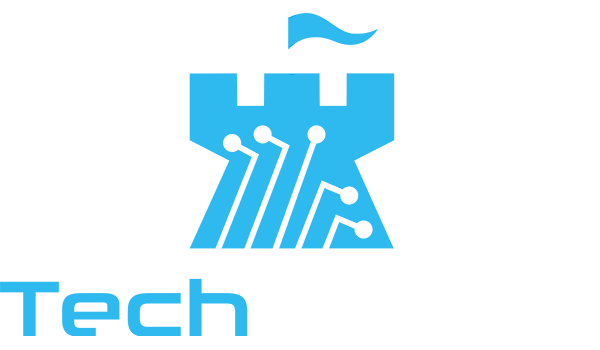
Speed Up: 11 Easy Tricks To Fix Your Slow Computer
Do you remember the days of blowing on your computer or game console, hitting it a few times, and hoping that that would fix its slowness? Back in the day, that might have worked.
Nowadays, technology is more advanced and requires a little more care. Very few things are as annoying as a slow computer. Doesn’t it always happen when it’s least convenient?
You’re right in the middle of that important paper, scrambling to finish a project before its deadline, or trying to show someone a picture or video on limited time. It happens to everyone. Keep reading for the 11 pieces of advice on how to clean a slow computer.
1. Update! Update! Update!
Be honest: how often do you receive the “updates required” notification on your desktop and immediately dismiss it, and then repeat that for days or weeks on end?
Many of us have pending updates. We ignore them because they make us stop what we’re doing while the computer shuts down, restarts, and updates itself. Who knows how long each update will take?
You may not think it’s a big deal to dismiss them, but you’re slowing down your computer by doing so. Those updates are just that: updates. They improve the functionality and speed of your computer.
If you’re behind on updates, you can expect your computer to be slower. Get in the habit of accepting each update that pops up on your desktop. Stop putting them off!
2. Check for Viruses
You may not know it, but viruses infiltrate your PC all the time. A big, flashing, red alert doesn’t have to show up. One rarely does.
Your computer does automatic “maintenance scans” to check for things like viruses and corrupt files, but you can always do a virus check on your own. Here’s how to run a maintenance scan:
- Simply type “chkdsk” into your PC — this is your computer’s “check disk” command that scans your hard drive.
- Type in “sfc” — this is your computer’s “system file checker,” which detects system files that may be corrupt. Not only does it find them, but it also tries to fix them.
The check disk and system file checker commands are useful and easy. Run them regularly, especially if you notice your computer slow down.
There are also plenty of options for doing a general virus check on your computer. Have you ever seen a virus alert or a reminder to run a virus check pop up on your desktop? Those are for early detection and prevention.
Viruses can come from downloading programs, downloading corrupt files, visiting corrupt websites, or even shopping online. Many viruses like “worms” slither deep into your system and hide there. Oftentimes you’re unaware that they’re there, infecting your computer!
Conduct regular virus scans and if you find one (or more) that you can’t get rid of, don’t be afraid to reach out to a professional to remove it. Better safe than sorry! Since prevention is always better than treatment, check out this article about how to prevent computer viruses in 2019.
3. Defragment
Most people have never heard the word “defragment” or “defragmentation,” and even fewer understand what it means. That’s too bad because defragmenting your computer can significantly help it run smoother an faster.
The process of saving and deleting files is complicated. Pieces of your files are all stored in different places throughout your computer. This means that, when you search for a certain file, your system has to search everywhere for it.
That takes a lot of time and brainpower on your computer’s part. Searching for one file in 25 different places slows down your computer.
Here’s what defragmentation is in a nutshell: it sorts your files so your computer doesn’t have to spend so much energy (per se) looking for things. It’s like spring cleaning for your computer.
If your computer has to do more work, you can expect it to run slower. That’s why you should do all you can to help it out. Defragment your files so your system can find things easily:
- Search “defrag” in your home search bar
- “Defragment and Optimize Drives”
- Choose which drives you’d like to defragment
- “Optimize”
Your computer should then start organizing the drives you selected. It’s as easy as that!
4. Clean the Vents
This one may hearken back to the old days of blowing on your computer when it slowed down, but it can help. Computers, especially desktops, come with vents. If your vents are full of dust, it can interfere with your system’s operations.
Yes, you can try blowing on it, but that probably won’t solve the problem. Instead, try a handheld vacuum to suck up the dust and debris or a compressed air can.
While you’re at it, use the vacuum or compressed air canister on your keyboard as well. You never know what crumbs, hair, and debris are messing with your system.
5. Fully Close Programs
For most people, it’s a pretty normal occurrence to look at the bottom of your screen and realize that you have way more systems open than you thought.
It’s no secret that running too many programs at once will slow down your computer. It’s just logical. If you’re experiencing speed and processing issues, try closing unnecessary tabs.
On top of that, did you know that some systems start automatically, without you doing it and without you knowing? Things like Spotify, iTunes, and Skype open themselves when you get onto your computer. These are “startup programs.”
Your Spotify can be open and running in the background all day, without you realizing or thinking twice about it. That’s certainly eating up your RAM and making your PC is running slow.
The good news is that you can manually select which systems you want to start. Here’s how:
- Use your keyboard to select Ctrl + Shift + Esc
- “More Details”
- “Startup” tab — this will show you the startup programs on your computer.
- Deselect the ones you don’t want opening/starting on their own.
Now you won’t waste precious RAM and have to wonder how and why so many systems are open on your computer.
6. Restart Regularly
How often do you restart your computer? If you’re like most people, it’s only when you have to for an update or troubleshooting issues.
By doing so, you’re making your computer’s job harder than it needs to be. Restarting your computer regularly is good for it.
It’s easier to close it when you’re done so you can get started again the next day, but that means your computer is always on. It might be sleeping, but it’s on.
This is similar to how you’re supposed to let your phone battery get all the way down to zero before you charge it. Every once in a while, charging it from the empty is good for its battery life. It’s a similar concept with your PC.
If your computer has noticeably slowed down and isn’t responding to other cleaning tactics, try restarting. Then do it again at the end of the day and the next day. It could be the refresher that your system needs.
7. Computer or Internet Problem?
This one might seem obvious to you, but many people mistake their internet running slow for their computer running slow.
Oftentimes, the problem is your internet connection, not your actual computer. There’s an easy way to test this out: open a computer-only program that doesn’t require internet, like Word. Use it for a few minutes, save the file, and reopen it. How did it work?
Now open a browser and search for something. Click on a link, download a picture, or upload a post. How did it work?
If your computer-only programs work fine but your systems that need the internet are slow, you have an internet connection issue. If programs like Word are also slow or glitchy, then it’s your computer.
8. Think Before You Download
It’s tempting to hit the “download” button when you want a new computer program or online update. Some are safe, but some are not.
Downloading and installing foreign programs onto your computer is risky. Not only can they come with viruses and malware, but they also take up more and more space on your computer.
These downloads can have long-lasting negative effects on your computer’s speed. If you want to clean up your slow computer, start thinking twice before you download or install things from the internet!
9. Utilize Disk Cleanup
Did you know that your PC has a built-in function to detect and delete unnecessary large files? It’s called “Disk Cleanup.” This function is super user-friendly and does the searching work for you!
Follow these steps:
- Click “Start” on your desktop
- Then “All Programs”
- “Accessories”
- “System Tools”
- “Disk Cleanup”
This “Disk Cleanup” function scans your whole computer for big files. Then it brings them to your attention so you can decide what stays and what can go. An easy, no-hassle way to cut down on useless space wasters!
10. Uninstall Unwanted Programs
You undoubtedly have multiple programs on your PC that you never, ever use. Maybe you needed PowerPoint in school, but now you’ve graduated and haven’t used it since. It makes sense to get rid of it!
Every program takes up a good amount of space in your storage, even if you don’t use it! So go ahead and uninstall unwanted, unused programs to maximize your space and speed.
11. Delete Unwanted Photos & Documents
Did you know that the average person’s photo folder usually takes up 250GB of computer storage? And double that if you have videos!
How many of us have hundreds of old photos on our computer that we never look at, maybe even have forgotten about? All those unwanted, unnecessary pictures are slowing down your computer.
Set aside an hour of your day to do a deep clean of your computer pictures. It may take longer than you think to go through each of them!
Remember that you can transfer pictures to the cloud or Amazon Photos (or many other photo apps), so they don’t all need to be in your computer storage.
The same thing goes for documents. How many old spreadsheets, papers, PowerPoints, and downloads are sucking up your computer space right now?
Here’s how to cut down:
- Make a new folder on your desktop, name it “KEEP”
- Make another folder named “MAYBE”
- Start in your “Documents” folder and go through everything in there.
- Drag things you want or need to keep into the respective folder.
- Drag things you’re not sure about into the “maybe” folder.
- Drag unwanted things into your recycle bin.
- When you’re done, move onto the “Downloads” folder and repeat the steps.
Again, this may take a while, but the amount of room you free up will shock you. Your old photos and documents are currently taking up way more space than they need, but you can fix that.
Now You Know How To Clean a Slow Computer!
Did you think that you had to spend a considerable amount of money to get your computer fixed (or trade it in) once it slows down? Or maybe you thought you had to live with it because it’s no longer the newest version?
Neither of those assumptions are true! Using these 11 tips will direct you on how to clean a slow computer. Maybe it is time for a trade-in upgrade, but you can’t know for sure until you try these tips.
If you’re suspicious that your computer has malware or other issues, don’t hesitate to contact us for a professional diagnosis. We can always help you inspect, clean up, and speed up your computer.
